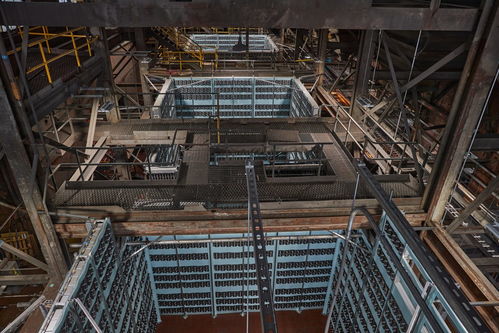Cryptocurrency mining, once an obscure niche activity, has evolved into a sophisticated enterprise that blends cutting-edge technology with strategic investment. At its core, mining involves utilizing powerful machines—often referred to as mining rigs or miners—to solve complex algorithms, securing blockchain networks like Bitcoin (BTC), Ethereum (ETH), and even Dogecoin (DOG). But when it comes to purchasing these mining machines or opting for hosting services, countless questions arise. How to choose the right rig? What’s the real difference between owning one versus hosting it remotely? Let’s unravel the intricacies behind mining machine acquisitions and hosting.
First, understanding the type of mining machine suited for each digital currency is essential. Bitcoin mining rigs, for instance, rely heavily on Application-Specific Integrated Circuits (ASICs) designed exclusively to process the SHA-256 hashing algorithm. These ASIC miners boast high hash rates and energy efficiency, but at a premium cost. Ethereum mining, conversely, leans on Graphic Processing Units (GPUs) due to its Ethash algorithm, which is more memory intensive and less reliant on raw computation speed. Dogecoin mining, intriguingly, merges with Litecoin via the Scrypt algorithm, allowing miners to participate in merged mining — extracting rewards from both coins simultaneously. The choice depends largely on your target currency and whether you prefer single or multi-coin mining setups.

Buying a mining machine outright might seem straightforward, but considering electricity consumption, heat dissipation, and noise levels makes it more complicated. These rigs aren’t just plug-and-play gadgets; they require stable power grids, proper ventilation, and consistent maintenance. That’s why many investors turn to mining machine hosting—outsourcing the storage, cooling, and operational oversight to specialized facilities. Mining farms emerge here as a pivotal link, aggregating thousands of rigs in large warehouses equipped with industrial-grade power supplies and cooling systems. Hosting permits owners to benefit from mining profitability without facing logistical and technical hurdles, but it comes at hosting fees and often contractual commitments.
Compared to running mining machines at home, hosting mining rigs within professional farms can massively improve uptime and efficiency. As ASIC miners churn through Bitcoin’s blockchain at mind-blowing speeds, even brief downtime erodes profitability. Professional mining farms often offer custom-tailored packages, ranging from full ownership hosting—where you control the machine yet delegate operations—to cloud mining, a venture where you buy hash power without owning physical devices. Cloud mining, while alluring for novice investors, carries risks like platform reliability and hidden fees, thus requiring cautious due diligence.

The dynamic nature of cryptocurrency markets adds another layer of complexity. Bitcoin’s halving events—scheduled reductions in mining rewards—drastically affect the mining landscape, often triggering waves of hardware upgrades. Similarly, Ethereum’s transition to a proof-of-stake consensus model (Ethereum 2.0) signals profound changes in mining profitability and viability. Dogecoin’s origin as a meme coin might suggest lesser seriousness, yet its integration into various exchanges and cross-chain interoperability underscores robust miner demand. When purchasing mining machines, prospective buyers should gauge upcoming protocol changes, exchange listings, and network hash rates to avoid stranded investments.
Exchanges play a pivotal role by providing liquidity and trading platforms where mined coins can be instantly converted into fiat or other cryptocurrencies. The seamless interaction between miners, exchanges, and hosting farms creates an interconnected ecosystem fueling crypto economies. Notably, miners often need to choose pools—collective mining groups—tailored to maximize their returns on specific coins. An informed miner understands when to pivot between pools or currencies, leveraging fluctuations to optimize revenue streams.
In sum, demystifying the process of mining machine purchases and hosting requires a multifaceted approach. Each cryptocurrency’s mining algorithm dictates what hardware is required—be it ASICs for Bitcoin or GPUs for Ethereum. Hosting services mitigate operational challenges but introduce new considerations such as fees and control levels. The volatile market terrain, shaped by network upgrades and exchange dynamics, demands staying updated to ensure investments pay off. Whether you’re eyeing to buy your first miner or contemplating farm-hosted scalability, the blend of technology know-how, strategic foresight, and market awareness is indispensable in navigating today’s vibrant mining landscape.


One response to “Demystifying Mining Machine Purchases: Answers to Common Questions”
这指南巧妙解答矿机购买谜团,从基础问题到市场趋势,提供实用建议,却意外忽略了环保影响,让新手更自信,但老鸟可能求新颖。